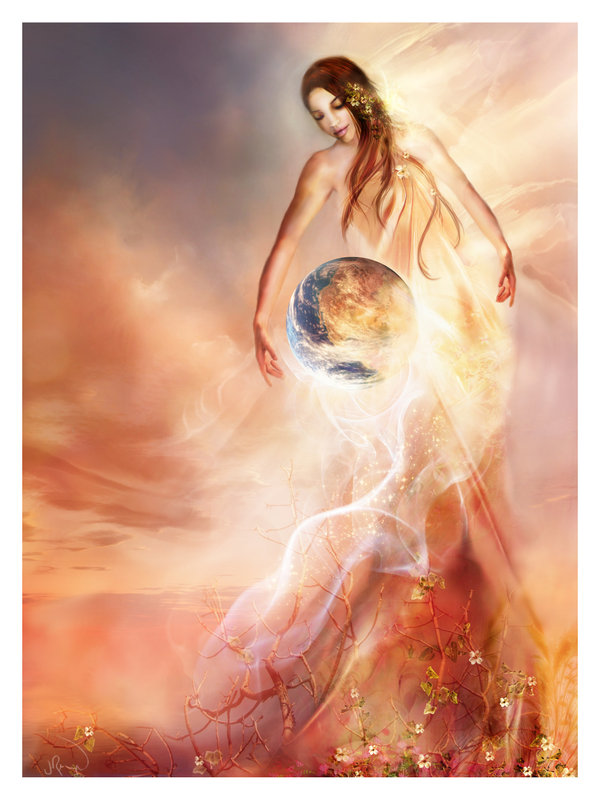Ordain Women Conversations Greatest Hits – Part 2

This is a continuation of my list of the most common questions I encounter from people who don’t understand Ordain Women. The question for today is actually a four-part gem:
- You just don’t understand the gospel / how the church works.
- Have you prayed about this?
- Don’t you believe in the prophet / revelation?
- Why can’t you just accept the answer?
Yes, I have prayed about this and sought an answer with an open and sincere heart. But let me counter with this: Have you? So many people tell me I should pray about the question of gendered priesthood and do you want to know what they have most in common? They have not prayed about the question. I believe firmly that if more people would pray about this question—seeking a prompting from the Holy Ghost and our Heavenly Parents—that I would at least receive less hate mail.
I believe that revelation only comes from the prophet. But we have seen the responsibility of members to help move the Lord’s church forward. It is well documented throughout the Bible, the Book of Mormon, and church history. In Numbers 27 we learn of Zelophehad’s daughters, who upon the death of their father and learning that they would be disinherited because he had no sons, approached Moses with a request to change the inheritance laws. Moses prayed to the Lord and received confirmation of their request. I see this type of member-driven revelation as part of the beauty of the gospel and the way our church has changed, even more recently.
If I did not believe in these things, why would I seek change through their authority? I believe that the only way priesthood power can be conferred and exercised is through the proper channels—so I seek it through those channels. I would accept a direct answer to my request as an answer for the moment only, in the same way that the women of my family who were told by church leaders to enter polygamous marriage were later told that polygamy was not of God. We now know that members who shared a sincere desire for access to the priesthood and temple to be expanded to members of color were given multiple “no” answers, until one day… the answer was “yes.” As long as I feel prompted to continue this work, I will continue to reach out to the general leadership in any way I can.
For There are Many Gifts

For all have not every gift given unto them; for there are many gifts, and to every man [and woman] is given a gift by the Spirit of God.
To some is given one, and to some is given another, that all may be profited thereby.
Doctrine and Covenants 46:11-12
As we approach the Christmas season, I, like many, wonder when the LDS Church—in fact, all who claim Christianity—will fully reflect the radical inclusiveness of the gospel of Jesus Christ.
After the hatefully divisive rhetoric of the recent election in the United States, we cannot surrender to the misogyny, racism, homophobia, and xenophobia that fueled it. “[T]his is one of those rare moments,” the Deseret News cautioned, “where it is necessary to take a clear stand … even as we hope for a more auspicious future of liberty, prosperity and peace …”
One of my favorite Christmas carols reads, in part:
“Oh, who are these that throng the way to Bethlehem, to Bethlehem
And onward press in glad array,
All on a Christmas morning? …”
“They bear good gifts in rich excess
Of love and joy and thankfulness,
With which [us all] they fain would bless,
All on a Christmas morning.”
In this season of gift-giving, it is simply self-defeating to leave untapped the countless gifts, talents, abilities, and aspirations that could be shared more readily, if we embraced our diversity and opened priesthood ordination to women and all who are worthy of it.
Let us lay aside the rigid gender roles, stereotypes, and tortured logic that keep us from seeing each other as we are—spiritual siblings, colleagues, and friends all inching together toward the hope of Bethlehem.
Ordain Women Conversations Greatest Hits – Part 1

I’ve been involved publicly with Ordain Women for more than three years. It has been a life-changing and testimony-building experience, and probably not in the ways most people would assume. Over these years, I have had the opportunity to speak with countless individuals, in person and online, about the question of religious gender equality, women in Mormonism, and my own Mormonism. Over the next few weeks, I will share the most common questions I encounter and my own personal answers. I hope this can spur thought regarding these questions and encourage conversation about how you might answer them.
1. Why don’t you just join another / start your own church?
Because this church is my home. For those of us who still testify of the gospel, this church is where we find it. For those of us who may have stepped away from the church, that does not mean we no longer care. We care about the friends and family who remain in the church. In short, we don’t all join another church or start our own church because we are part of this church and we care about it.
An invitation to leave this church because I struggle with a part of it suggests that we, as a church, cannot handle honest discussion. It also implies that only people with no questions and no points of concern are welcome. I do not believe that is how the Savior operated when He was on the Earth or how Joseph Smith did either. I also do not accept that seeking knowledge and growth is grounds for leaving a church built on a foundation of seeking knowledge and growth.
Why Mormons and Religious Conservatives Embrace Donald Trump
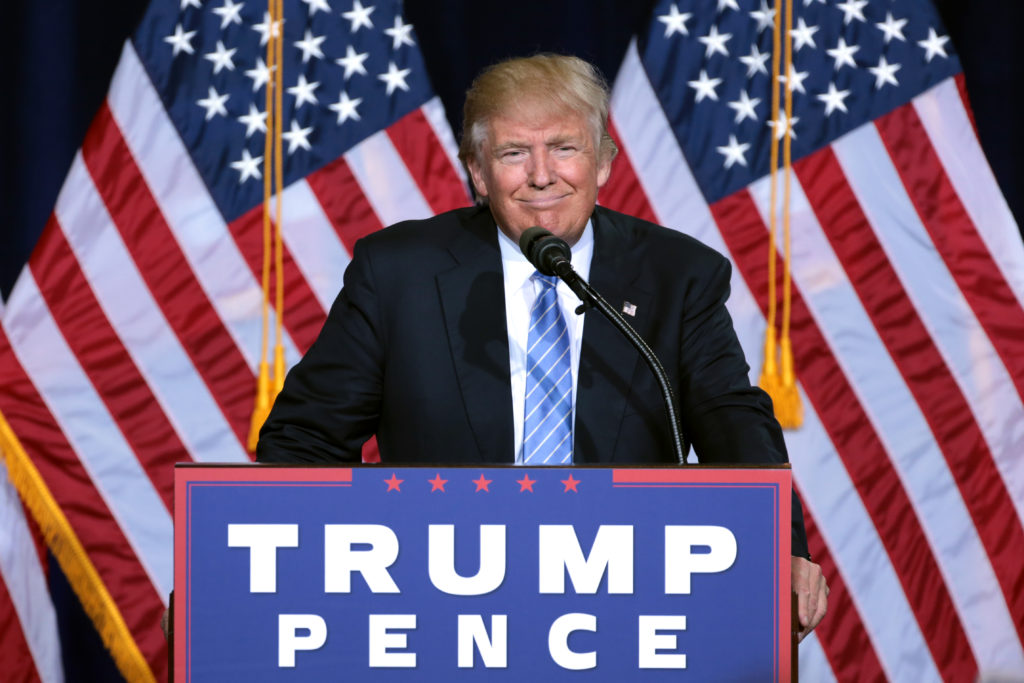
My logic was terribly mistaken. I just didn’t get it. The Trump victory floored me. After the release of the Billy Bush “grab them by the p***y” video, I was certain that Mormons, evangelicals, and other conservative religious people would desert Trump in droves. I believed it was impossible for him to win without conservative religious voters. But as the results rolled in on election night, I felt confused. My thinking was obviously very flawed, but how?
In October, my original analysis had been confirmed when the LDS Church-owned newspaper the Deseret News called for Trump to resign. (Obviously, the Deseret News would not make such a bold statement about the election without direction from Church leaders.) Despite this command from the top, instead of deserting Trump in droves, Mormons voted for Trump in droves. Sixty-one percent of voting, American Mormons defied church leaders and voted for Trump. Likewise, sixty percent of voting, white, American Catholics voted for Trump, and an unbelievably high 81 percent of voting, white, American evangelicals pledged their allegiance at the polls to the man who bragged about sexually assaulting women.
The answer to my confusion came the evening after the election when I attended a presentation by a former FLDS woman, who talked about growing up in a fundamentalist Mormon family. She talked about her own experience of sexual abuse and rape at the hands of an older man when she was only twelve. She was told that God had commanded that one day she was to be that man’s plural wife. The man took this “divine command” as a license to repeatedly rape a young girl. I finally understood the connection between conservative religion and Trump, when the speaker said that she was taught to be extremely modest because men were unable to control their own desires. It was up to women to control men’s sexual urges. My own mainstream Mormonism teaches this same message by insisting that women and girls keep themselves covered to stop impure thoughts from crossing the male mind.
At the heart of conservative religion is the assumption that men are bastards. Starting with Adam, the story goes, men could not help themselves. When a woman failed to stop a man’s sinful ways, she was the one who deserved all the blame. Likewise, women are taught that they are to facilitate men’s sexual desires. When Joseph Smith’s first wife Emma pushed back against Joseph’s polygamy, he invoked God and threatened her with eternal destruction.
And I command mine handmaid, Emma Smith, to abide and cleave unto my servant Joseph, and to none else. But if she will not abide this commandment she shall be destroyed, saith the Lord; for I am the Lord thy God, and will destroy her if she abide not in my law. D&C 132: 54
Despite endless talks about the evils of porn from the LDS pulpit, the Deseret News reported in 2009 that Utah is the #1 state in the country for porn subscriptions. At the same time, Mormon men pack porn addiction support groups, while their wives and girlfriends attend their own groups to learn how to keep their men’s urges in check. More seriously, rape and sexual violence in Utah is consistently much higher than the national average:
One in three women will experience some form of sexual violence in their lifetime. Rape is the only violent crime in Utah that occurs at a higher rate than the rest of the nation. Studies show that one in eight Utah women will be raped and one in 50 Utah men will be raped in their lifetimes (1). According to Uniform Crime Reports, the rape rate in Utah has been consistently higher than the U.S. rate. In 2014, Utah’s reported rape rate was significantly higher than the U.S. rate (67.7 and 51.9 per 100,000 females) (2). However, the majority of rapes (88.2%) are never reported to law enforcement, indicating that sexual violence in Utah is grossly underestimated . . . . (http://www.health.utah.gov/vipp/topics/rape-sexual-assault/ )
I was wrong. Trump’s crude and sexually abusive ways are not foreign to conservative religious groups. Trump is exactly what fundamentalist expect a man to be. He is simply exemplifying the true “natural man,” when viewed through a conservative religious prism, the prism we as Mormons use to see the world. No wonder Trump didn’t lose the votes of Mormons or other religious conservatives, despite bragging about his nonconsensual sexual exploits. No wonder conservative icon Rush Limbaugh mocks the concept of consent . Too often, as Mormons we expect men to be like Trump: naturally base and crude. We see controlling men’s urges as women’s work. This perspective is very unhealthy for both men and women. Men are shamed and women are blamed.
The antidote to Trump’s misogyny is not more female modesty, but equality. In our own church, our twisted view of sex roles, male superiority, and female responsibility drives sexual deviance among our members. Equality is the cure. Until women are ordained and treated as fully equal in the Church, Mormons will be plagued by the ugliness personified in Donald Drumpf.
First African-American Woman Has Been Elected Diocesan Bishop In Episcopal Church

The Episcopal Church elected their first African-American woman bishop to oversee Indianapolis. As bishop, Reverend Jennifer Baskerville-Burrows will supervise local clergy.
This announcement was made the same day that Pope Francis said that women would likely never be Catholic Priests.
As a black-biracial woman advocating for ordination within the Mormon church, I find my hope and faith renewed by the progress made by the Episcopal Church, even when the work seems to be halted in other spheres.
Trump and the Mormon Purity Doctrine: Two Sides of the Same Coin
Like most people, I have been shocked and appalled by Donald Trump bragging about sexually assaulting women. The Billy Bush video made me sick to my stomach. As the political polls in Utah swing away from Trump, I have even felt a twinge of pride in this reddest of red states.
But, deep down inside, I am uneasy. I fear that my pride is not deserved. I worry that Utah’s rejection of Trump is based on it own form of misogyny, rather than an enlighten view of female equality. Whether it is the bordello or the pedestal, whether it is Trump or Mormon patriarchy, the bottom line is that women are seen as things, property, mere objects to be acted on by men. Women are not treated as fully human.
Today’s Mormonism puts women on a pedestal. Mormon’s believe in a Mother in Heaven, but she is placed beyond our reach. We are told we should not speak of her. We are told that She is so pure, that She cannot enter our world and interact with us. She is so sacred that we cannot know her in any meaningful way. Unlike male deity, She neither acts nor is acted upon. Unlike our personified Father in Heaven, She is objectified and placed on a heavenly pedestal, forever beyond relationship with us.
Likewise, Mormon culture strips women of their humanity. We promote a purity doctrine that imagines that some state of a female body matters more than the actual human being, who occupies that body. Trump’s crude view of women as objects that exist for his gratification, and modern Mormon purity doctrine both find a woman’s value in her sexuality. But given our history, this should not surprise us.
When I heard Trump’s sick bus ride claims of conquest, my mind quickly went to the acts of another powerful man in the 1840s, who used his celebrity, position and power to abuse women. Joseph Smith used claims of divine command to assemble a personal harem of dozens of women, including girls as young as 14 years old, to satisfy his personal desires. Using his claim that polygamy was the divine order of heaven, Smith set up a destructive legacy that injured millions. By placing maleness at the center of church power, he perpetually sentenced women to be lesser than.
Trump’s crude view of woman and Mormon patriarchy are two sides of the same coin. While Trump’s lewd acts and crude language repel Utah voters, like Trump the Mormon pedestalization of women also values women as sexual objects for the benefit of men. The antidote to this sick state of affairs is equality. It is time for Mormons to discard our doctrine of male supremacy and insist on full female power and equality both in and out of the church.
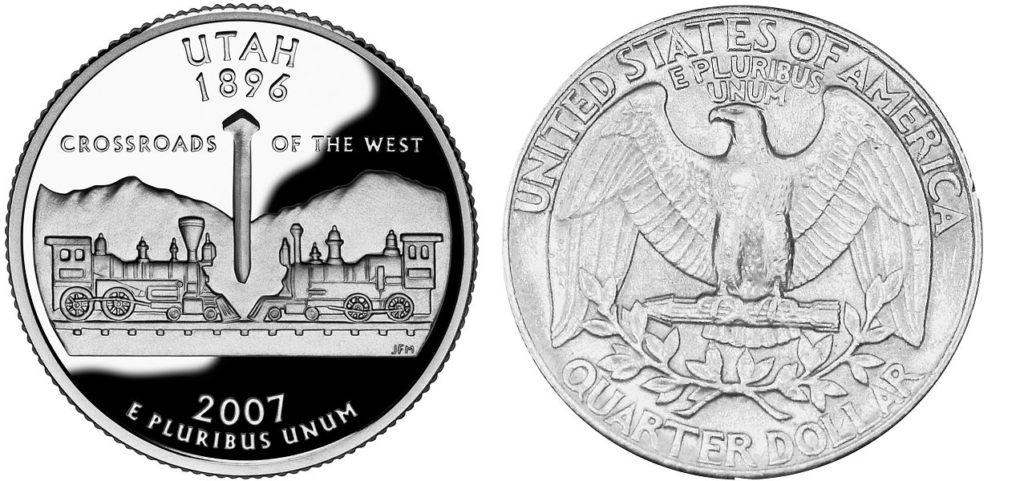
Words Have Power
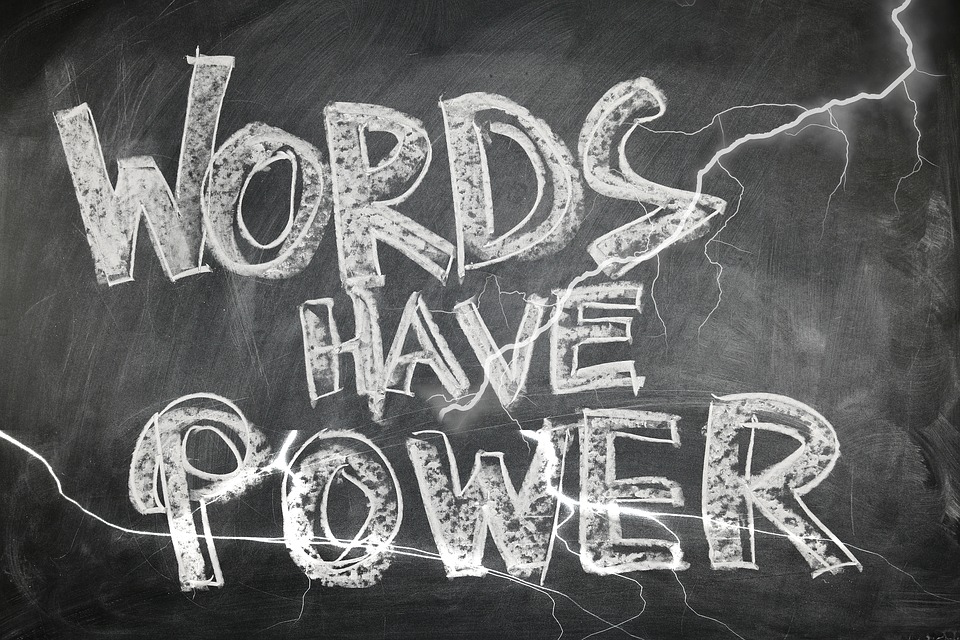
When my younger brother was a little boy, his favorite toys were his plastic soldiers. He seemed to have hundreds of them, and he would line them up on the floor and then would pick them up in sets of two to have them “engage” in hand-to-hand combat. This exercise was accompanied by a lot of noise as each time he made the soldiers make contact with each other, my brother would shout a series of words that while meaningless to the rest of us, seemed to heighten the excitement for my brother. When my stepfather would reprimand my brother for making so much noise, my brother would reply: “But, Daddy, the words make it more better.”
Although my younger brother had not yet mastered all the grammatical rules, he had learned an important lesson, to wit: Words have power.
I have previously written about how words can hurt, particularly when spoken in our sacred places. Members of our faith community have been grievously and, in too many cases, irreparably wounded by statements made by our Church leaders during General Conference questioning the destinations of those whose faith journeys have taken them or are leading them to places other than the LDS Church, worldwide devotionals aimed at young adults, etc. Sadly, we have experienced far too much pain when we have gathered hoping to hear words that inspire us and comfort us and instead hear words that disparage and wound us.
However, we have also experienced what my younger brother felt as he played with his toy soldiers. We have experienced the power of words to make things “more better,” to inspire, to galvanize, and to start a movement. Sometimes, as is the case with Donald Trump’s “such a nasty woman” statement at the last debate, words that were intended to hurt fail at that purpose and become an instant rallying cry.
People in the progressive Mormon community, of which Ordain Women is a part, have always known that words have power – power to hurt, but also power to inspire. Unfortunately, our community has not always been guided by that knowledge and there been too many instances where we have, individually and collectively, used words that wounded, whether intentionally or unintentionally, other members of our community.
We cannot continue to do so. We cannot deny the impact of our words by saying that people are too sensitive or by complaining that communication is being stifled because we have to think about what we are saying or writing. Instead, I challenge us to remember and think about my story about my younger brother and to use our words to make it “more better.”
Learning to Write My Name
I have this memory nestled into the recesses of my brain that pops up every now and again. It is from when I was about four years old, which is remarkable; my memories from early childhood are few and far between. I don’t know why this one stands out, but it is fairly clear. I’m sitting at the coffee table in our living room, with a pencil in hand, a sheet of wide-ruled paper in front of me. My mom is sitting with me, teaching me how to write my name.
And I was pretty mad about it.
I don’t remember what I was doing just before, but I do know that my mom had pulled me away from doing it to sit me down and make me trace out these hieroglyphics for some godforsaken reason, and I saw the whole exercise as pretty futile. “Why would I ever need to do this?!” I know my mom must have been losing patience with me. I was feeling so frustrated about this waste of time, that, unless I was an infinitely more patient person at the age of four than I am now, there was pretty much no way I wasn’t being obstinate. Since I knew the alphabet, but wasn’t yet reading, lining up the letters L – E – A – H meant little to me, and I had no interest in doing it over and over.
I remember my mom explaining that I was starting kindergarten soon and that I would need to know how to write my name at school. I vaguely remember her saying something about learning to read, and then understanding it all better, but I was like, “WHATEVER. I don’t want to do this and I don’t need it and I don’t understand why we’re even talking about this.”
It goes without saying, mom was right. She was right because she could see way, way past what I was seeing. She knew so much better than I did what the future held, the skills that I needed, and the things I needed to do to prepare. What she knew, that I couldn’t see, was that this was about my identity. She knew that the rest of my life would be shaped by my name and that everything I ever accomplished and everyone I ever connected with would all carry my name. Learning to write it was one infinitesimal step towards a wide open future, full of potential.
Bless her, I got to kindergarten and knew how to write my name. Super handy skill, that.
Sometimes I hear women in church talking about female ordination. I hear a lot of pushback against it. “We already have everything we need,” these women say, “we don’t need anything different. We want to keep doing what we have been doing.”
But I wonder you know? I sense our Heavenly Mother is standing by, and She can see way, way past what we’re seeing. She looks into the future and She knows the skills we need and what we need to do now to prepare. She is patiently sitting with us, Her obstinate daughters, who *just don’t want this and don’t know why we’re even talking about it,* saying, “My daughters, you need to know this. You need to learn this new skill. The more you learn, the better you will understand how important this is for you. This is a tiny baby-step, my daughters, and it will shape who you are for the rest of eternity. Everything you can accomplish, everyone that you can bless, it all comes back to you learning this skill. If you don’t take this step your identity will be stunted. You can’t reach your full potential without this.”
I feel like I can hear Her gentle nudges; I am ready to learn what She wants to teach me.
This post originally appeared on Rational Faiths.
Physical Space
Like many of you, I have followed the recent election with great interest. As a political junkie, I tend to watch debates for sport. But the most recent debate between Donald J. Trump and Hillary Clinton left me physically uncomfortable, enough so that I had to leave the room for a moment just to catch my breath. I have thought about it for a few days and decided that it was because what I saw felt eerily familiar.

I’m not someone who has terrible stories about abusive priesthood leaders in my past. I have been blessed to have, almost universally, incredibly wonderful men as bishops and stake presidents. However, watching Donald Trump pace around while Hillary spoke, and at one point approach her from behind and stand very close to her while she spoke, I was reminded of the many times I have felt the physical presence of men and its ability to demean and diminish women.
I was reminded of the moment a bishop, during an emotional exchange, attempted to physically move me from a doorway. The time another member of the ward council kept coming closer and closer to me while we had a discussion about how young women weren’t allowed on high adventure trips. And the time I approached a podium to welcome friends and family to my daughter’s baptism, only to have a bishop meet me there and elbow me away from the microphone because the priesthood presides at the meeting.

These sound extreme, and they probably are, but I was also reminded of the many times I had spoken at the podium during sacrament meeting: I was very aware, and uncomfortable, that the men of the bishopric were seated right behind me. I was taken back to the countless interviews I had, behind closed doors, with trusted priesthood leaders asking me questions about chastity and how I wore my underwear. And I distinctly remembered the time my stake president spent a full hour trying to convince me I should wear a dress to church instead of my formal slacks.
Are my priesthood leaders Donald J. Trump? Heavens no! They have been truly loving men who wanted the best for me, my family, my ward, and my stake. But my priesthood leaders are men who live in a world, and a religious community, that does not value women in its spaces. A community that sees the presence of women as “by invitation only” and therefore, not equally and rightfully there. While I have never felt physically threatened by this cultural behavior, I have felt emotionally and spiritually diminished by it. And that is a feeling we should not want for any child of Heavenly Parents.
I invite anyone who has encountered these same feelings, or something similar to share your story! Imagine the way our faith community could grow and flourish were we all considered equally vital in all spaces. And then write a profile and add your name to the growing list of people who support Ordain Women and our efforts to bring religious gender equality to our faith.
Have We Done Any Good? Part 2
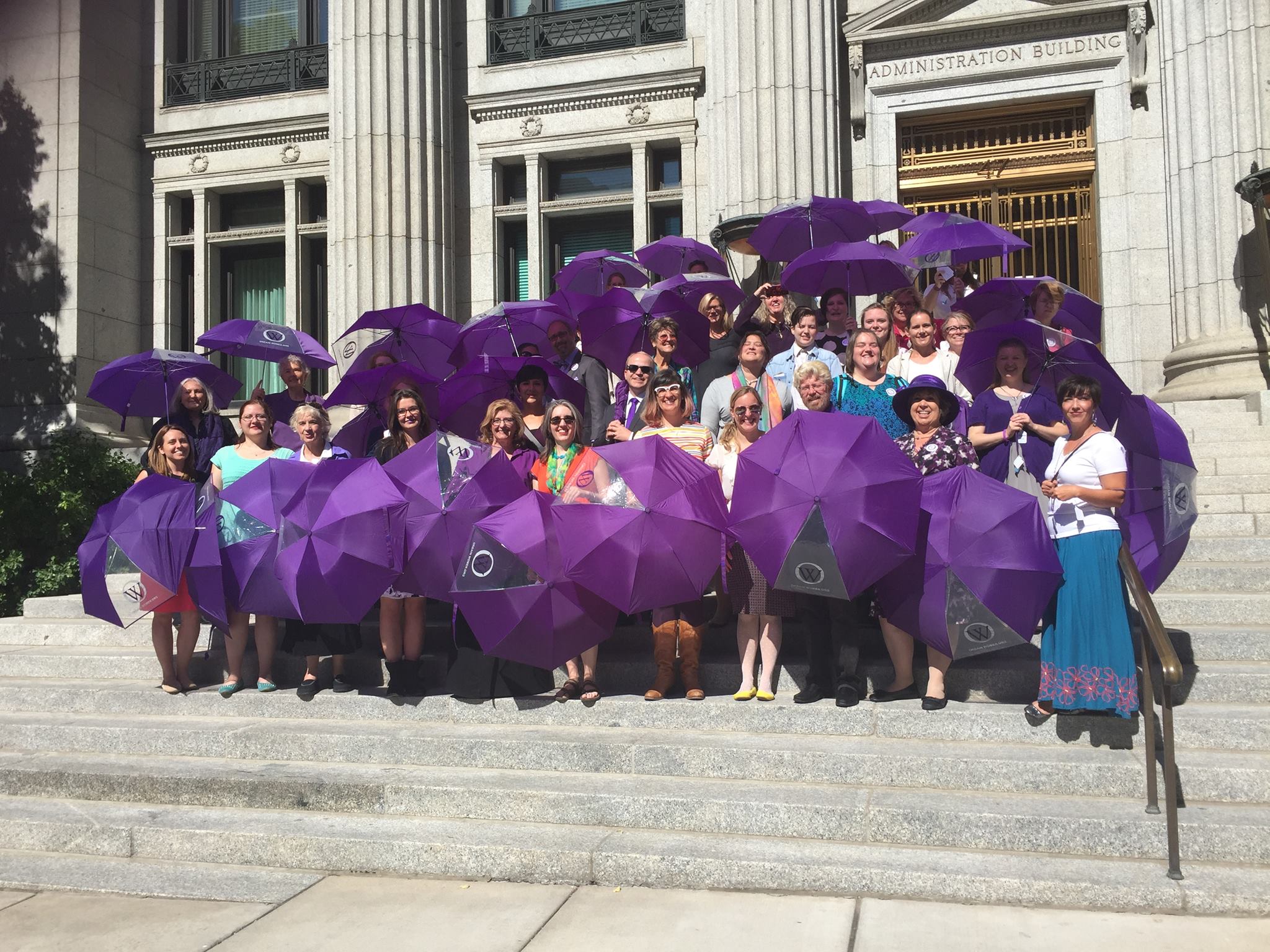
[This is part 2 of a two-part series. Please follow this link to read part 1.]
Before Elder Oaks’ April 2014 priesthood session talk, some Church leaders seemed to be ditching the “men have priesthood; women have motherhood” parallel, which is good news. The bad news is that some are substituting equally absurd parallels, such as “men have priesthood; women have influence”—whatever that means. Elder Oaks didn’t mention motherhood with a capital “M,” but he spoke about women’s ability to create new life as a counterpoint to men having priesthood. This, of course, is problematic. It ignores men’s contribution to the creation of life and the fact that there’s very little creativity in incubating. Most mammals are capable of it. Creativity comes in parenting, which both men and women optimally share. Even Sherri Dew suggests there are problems with the priesthood/motherhood equation. Though there are a few holdouts, I’m hoping using motherhood to justify an all-male priesthood is on the wane.
Unfortunately, separate but equal, complementarian rhetoric still holds sway. As President Burton noted in a video that was released on April 5, 2013, soon after Ordain Women launched its website, men and women “have different complementary roles and are happy with that. Equality is an interesting term. It doesn’t always mean sameness, but we are of equal value …” While it’s true that equality isn’t about sameness, it is about equal access and opportunity.
Finally, priesthood blessings, power, authority, office, and keys are being parsed and distinctions drawn in ways still shy of ordination but that attempt to be more inclusive of women. Late 20th century Church discourse responded to the women’s movement primarily by asserting that both men and women enjoyed the blessings of the priesthood. Such attempts spawned rhetoric that occasionally bordered on the absurd. For example, Elder Bruce C. Hafen, speaking at the BYU Women’s Conference in 1985, attempted to diffuse cries of gender inequity with the following: “The one [and, we are to assume, only] category of blessing in which the role of women is not the same as that of men holding the priesthood is that of administering the gospel and governing all things.” A mere trifle.
More recently, leaders have asserted that women can access both the blessings and the power of the priesthood. In the April 2013 video interview with the general women auxiliary presidents released a few weeks after the launch of the Ordain Women website, President Burton said: “I don’t think women are after the authority; I think they’re after the blessings and are happy that they can access the blessings and power of the priesthood. There are a few that would like both. But most of the women, I think, in the Church are happy to have all the blessings.”
In her review of Dew’s book, Valerie Hudson wrote: “Dew’s greatest contribution in this book … is her assertion that endowed women possess Godly power, or priesthood power. (103) She [Dew] begins with a statement by … Ballard that in the temple, both men and women are ‘endowed with the same power, which by definition is priesthood power.’ (105) [This was reiterated in Elder Dallin Oak’s April 2014 priesthood session talk.] Dew goes on to state that once endowed, a woman has ‘direct access to priesthood power for her own life and responsibilities.’ (114) … Priesthood power . . . is the power of God Himself available to men and women alike . . . who have been endowed in the house of the Lord (122) . . . men and women who are endowed in the house of the Lord have been given a gift of power, and they have been given a gift of knowledge to know how to access and use that power.’”(125)
“This,” says Hudson, “is really a very remarkable assertion. The formula has always been that women are the beneficiaries of priesthood power, and so only ‘share’ it vicariously by being married to a man. … But Dew is plainly saying that endowed women have been given priesthood power in the temple, which power they can use to benefit others. In other words, for the first time it is being articulated that women are not simply passive recipients of divine power that has been coded male, but are able to hold and use divine power as agents without a male intermediary. As Dew puts it, ‘Both men and women would have full access to this [heavenly] power, though in different ways.’” (74)
“Dew continues: ‘[W]omen, unlike men, are not required to be ordained to the Melchizedek priesthood in order to enter the house of the Lord, though the ordinances performed there are all priesthood ordinances. Neither are women required to be ordained to the priesthood to serve as leaders in the Lord’s Church. Why is that the case?’ (109)
“Now, that’s an interesting question to pose, isn’t it?” asks Hudson. “It’s a question that … is apparently a bridge too far for Dew and she does not answer it in her book.”
Increasingly, a distinction is being made between the authority and the power of the priesthood. Authority and power traditionally have been associated with office and, thus, available only to men. Power now seems to be available to all and is conditioned on righteousness. This is being said over and over again, although it’s not well developed.
In his April 2014 priesthood session talk, Elder Oaks went further and asserted that women not only enjoy the blessings and the power of the priesthood, they also exercise its authority in their callings. In the institutional Church, “priesthood authority is governed by priesthood holders who hold priesthood keys, and … all that is done under the direction of those priesthood keys is done with priesthood authority.”
While women do not currently hold priesthood keys and office, Elder Oaks asserted that both women and men are recognized as having “the authority of the priesthood in their Church callings.” He continued: “We are not accustomed to speaking of women having the authority of the priesthood in their Church callings, but what other authority can it be?” asked Elder Oaks. “When a woman—young or old—is set apart to preach the gospel as a full-time missionary, she is given priesthood authority to perform a priesthood function. The same is true when a woman is set apart to function as an officer or teacher in a Church organization under the direction of one who holds the keys of the priesthood. Whoever functions in an office or calling received from one who holds priesthood keys exercises priesthood authority in performing her or his assigned duties.”
Again, as with the power of the priesthood, we are still left scratching our heads and wondering what it means for women to exercise the authority of the priesthood in their callings. Can a Relief Society president, for example, bless the women over whom she presides by the authority of the holy priesthood, which she exercises by virtue of her calling?
Obviously, we still have work to do, but it’s clear that the question of women’s ordination isn’t going away.
Note: This post is taken from my 2014 Sunstone Symposium presentation. It can be accessed with complete references in the Afterword of my essay “The Birth of Ordain Women: The Personal Becomes Political,” in Voices for Equality: Ordain Women and Resurgent Mormon Feminism, (Draper, UT: Greg Kofford Books), 3-26.











